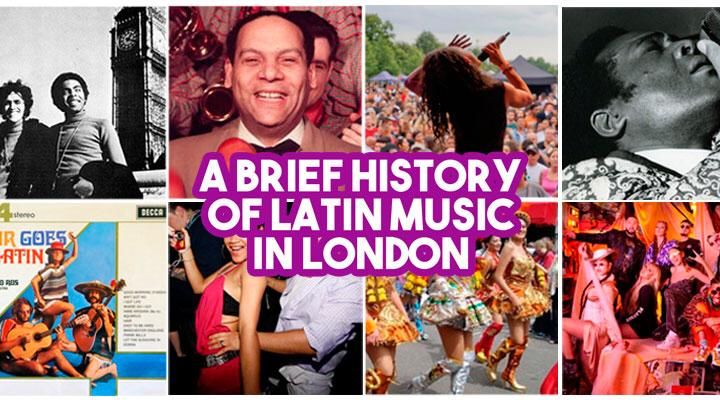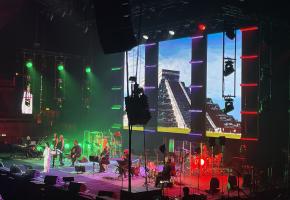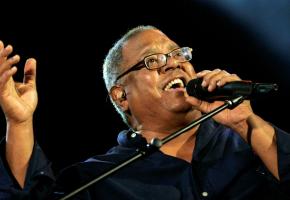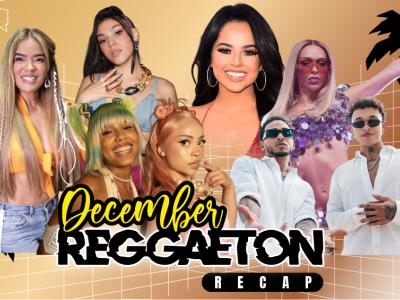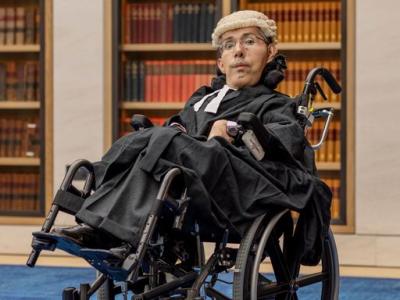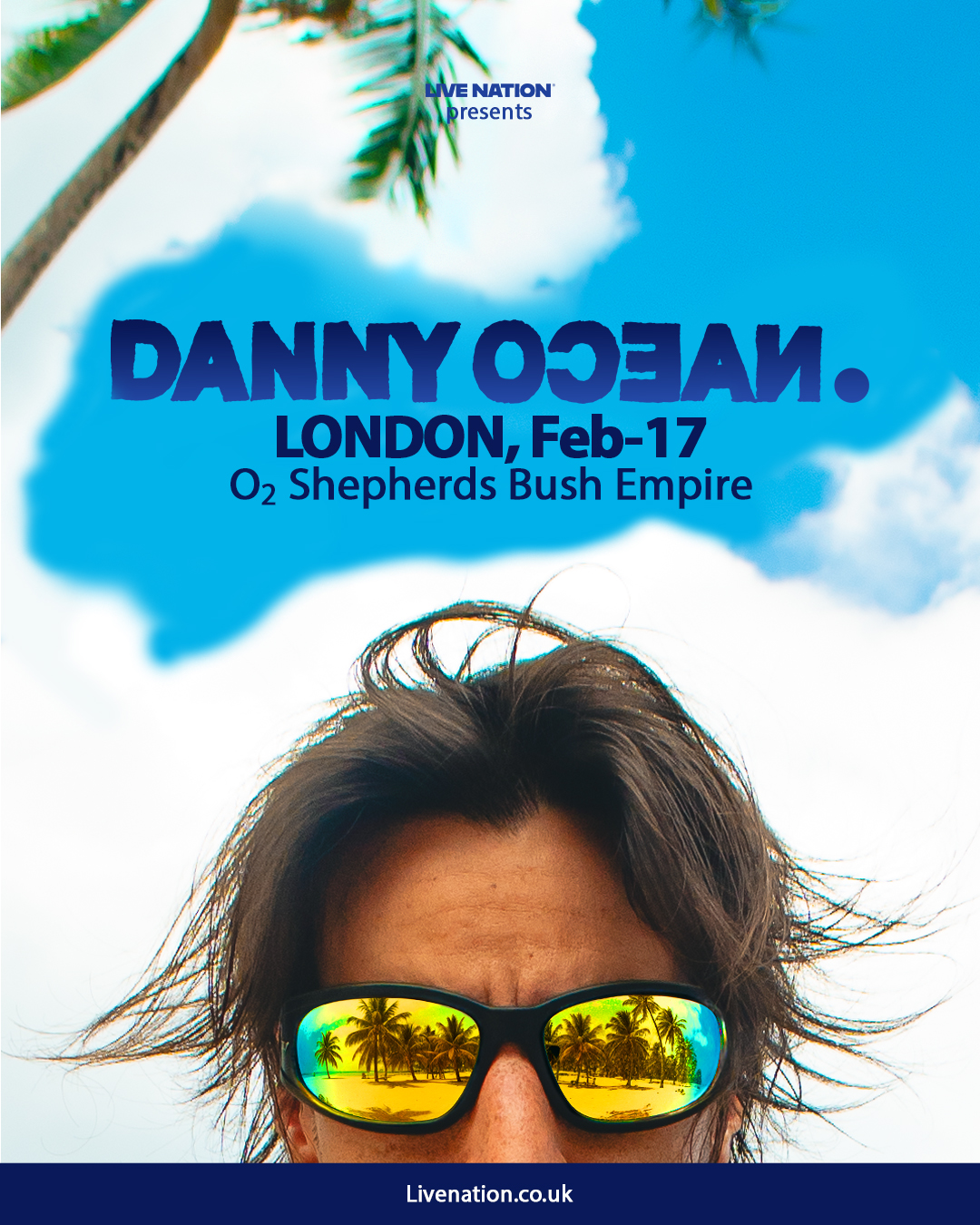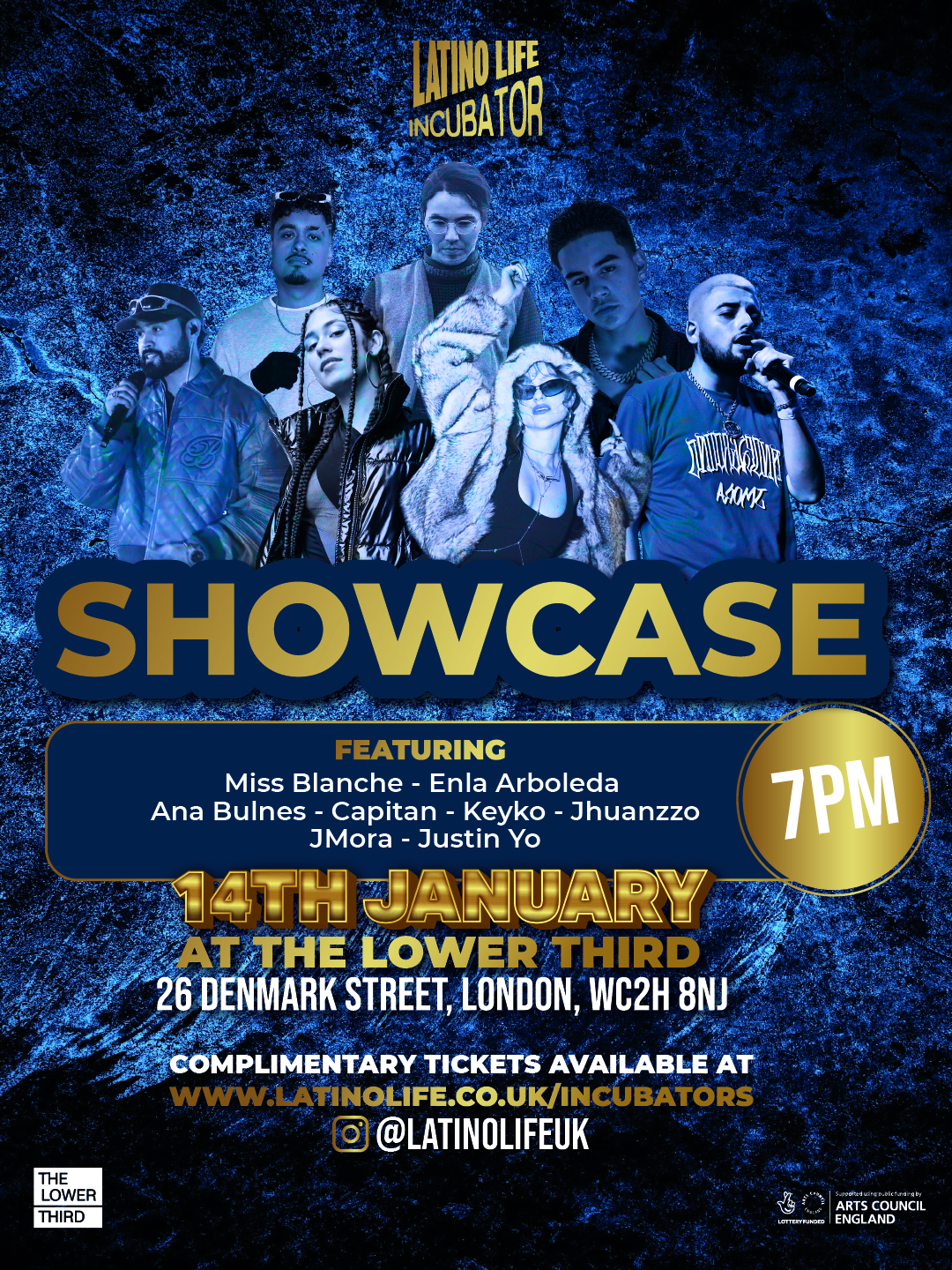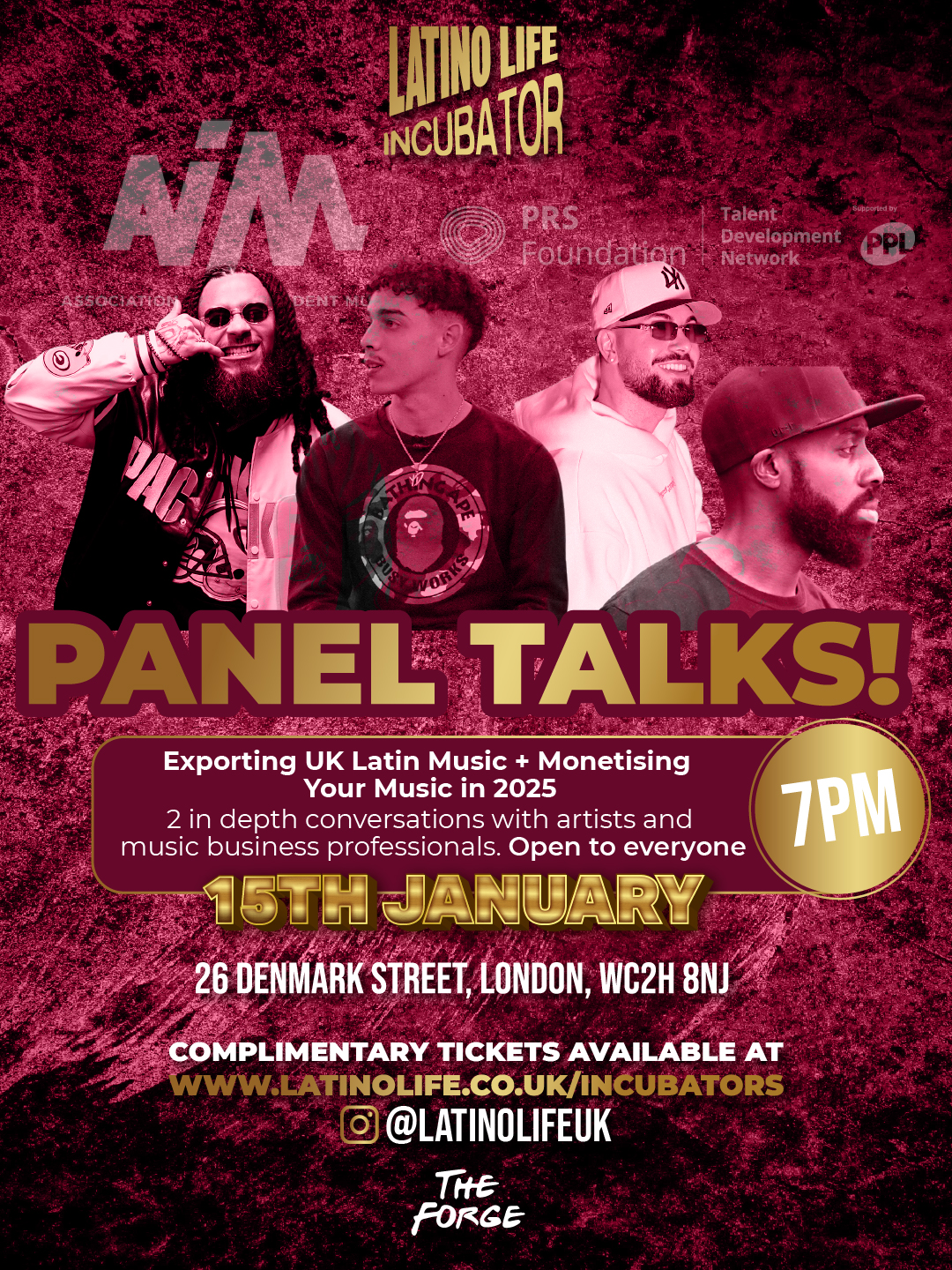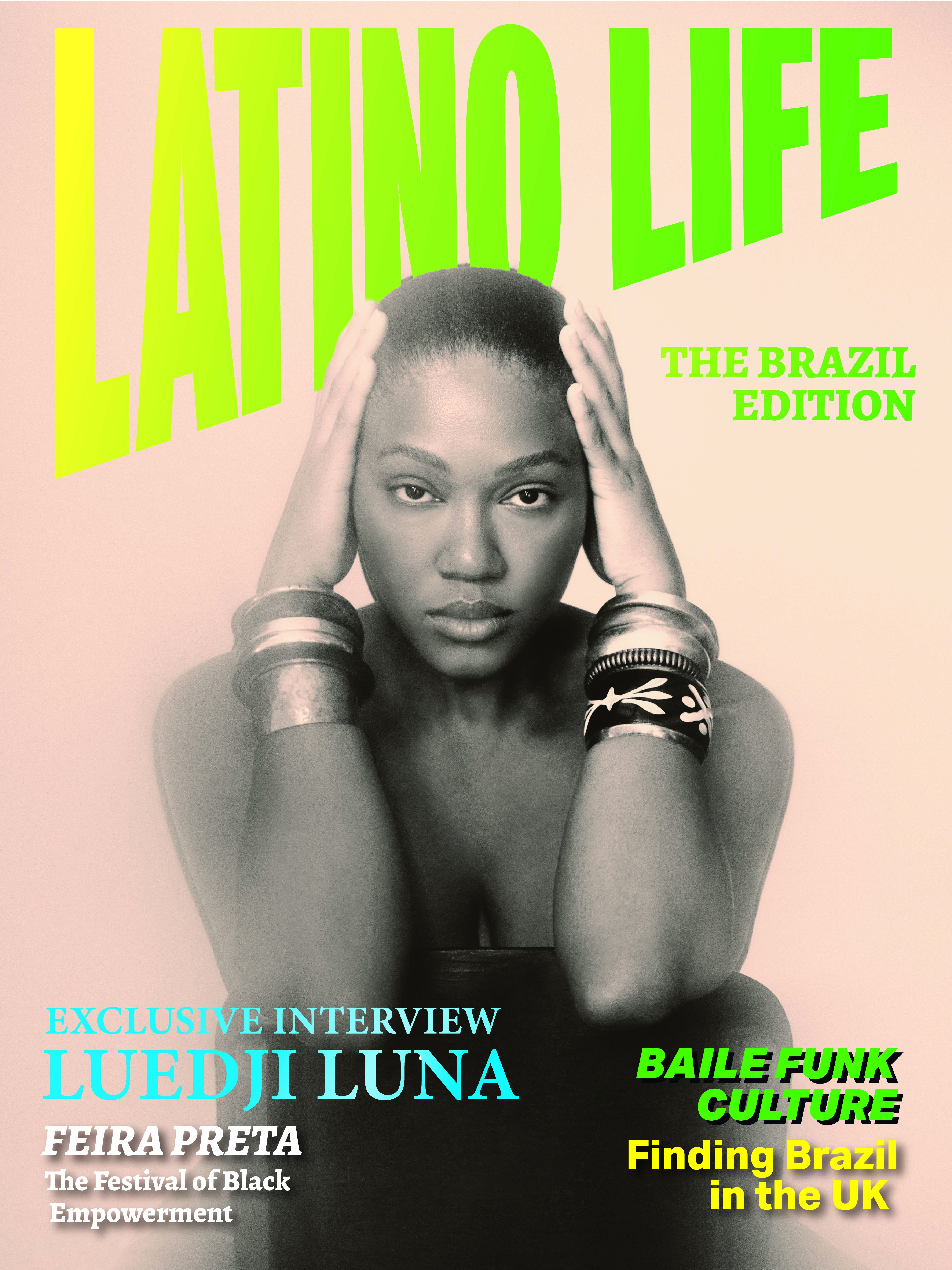It was 1981. I mostly remember the legs of dark, glossy-haired, poncho-wearing folk, as I squeezed through them to get to the front. There, I had full view of Gilberto Gil as he sung his acoustic version of Bob Marley’s 'No Woman No Cry'. Perhaps it was the sweet playful serenity of his rendition, its simplicity and richness, or the sheer emotion it generated in the room. Whatever it was, it blew my nine-year-old mind and I still thank the flaky babysitter, who ever she was, who failed to turn up that night, forcing my parents to sneak me into the Hammersmith Palais on a cold winter’s night. It was my first ever concert and it cemented my love affair with Latin music forever.
Many would be surprised to know how long Latin music has entranced audiences in the UK. Back in the 1940s Cuban bandleader Don Marino Barreto made his name playing to World War II pilots on the Salisbury Plain during the Battle of Britain. After the war, Barreto passed his band over to fellow Venezuelan Edmundo Ros who went on to become Britain's most successful Latin musician.
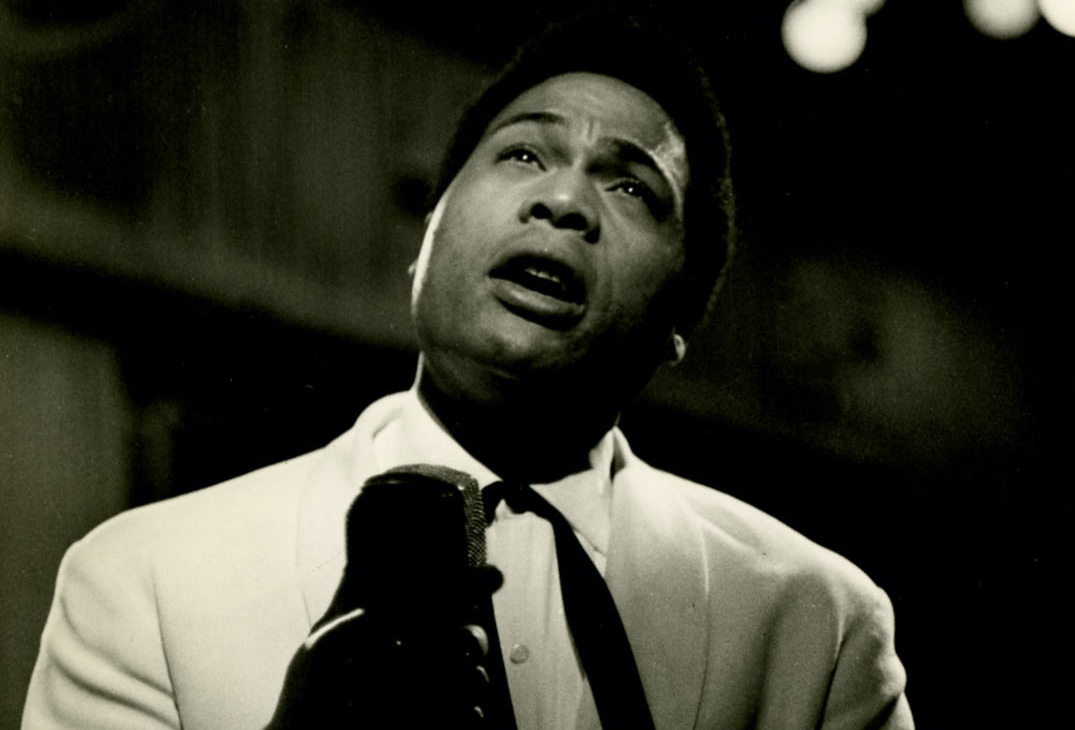 Don Marino Barreto
Don Marino Barreto
1940s and 1950s: the Curious Case of a One-Man Latin Allure
Arriving from Caracas, Venezuela, Ros became a sensation after Parlophone released Los Hijos de Buda in 1941. He went on to have several hits, including 'Rhythms of the South' and Arriba and his albums sold briskly. His biggest hit, 'The Wedding Samba', even crossed over to the U.S. Top Five, selling three million copies in the process.
The charismatic Latino attracted the cream of London society to his appearances at the lavish Coconut Grove on Regent Street. When a defendant in a high-profile divorce case implicated him as a catalyst for his marriage's demise, the national headlines only served to make him ever more popular. This Latin lover of the British aristocracy even taught the then-Princess Elizabeth (later Queen) and her sister Princess Margaret to dance.
Ros owned three nightclubs in the West End, including the Coconut Grove site which he bought and renamed Edmundo Ros' Dinner and Supper Club, and was a DJ on Radio 2. His radio programmes became the ‘housewives choice’, as he tailored his Latin big band sound to the English ear by emphasising melody over rhythm. The cool society scene created by Barreto and Ros, opened the door for other Afro-Caribbean immigrant artists such as Rita Cann, the distinguished pianist who formed her own Latin Band in the 1940s. Ros was awarded the Order of the British Empire in the 2000 New Year's Honours List.
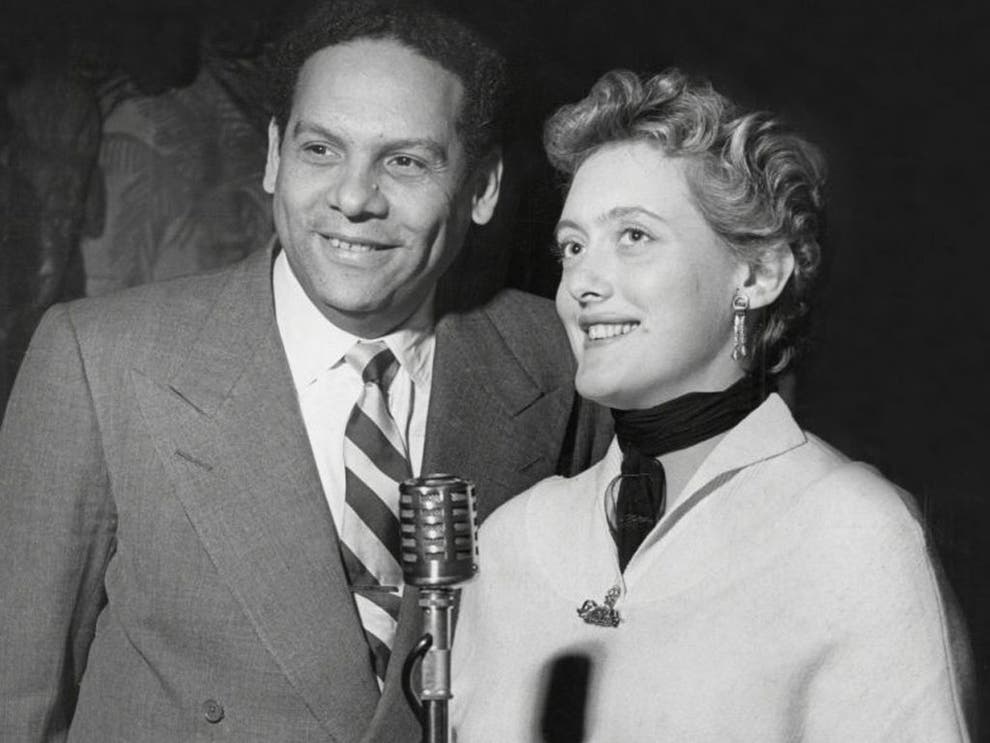 Edmundo Ros
Edmundo Ros
1970s: The Music of Solidarity
During the 1960s, the popularity of Latin Music gave way to Beatlemania and the ascent of English pop. In the early 1970s, however, it came back in a different form, when political refugees started to flood in from the wave of dictatorships sweeping through Latin America, starting with the coup that overthrew socialist President Allende in Chile in 1973 to the US interventions in Central America of the 1980s. With the political migrants, many of whom were creative types and musicians, you had a developing interest in the Nueva Trova and Canción de Protesta (protest music) of the likes of Argentina’s Mercedes Sosa, and Cuba’s Silvio Rodriguez. Many Latin American artists sought refuge from the dictatorships raging across Latin America, perhaps the most famous being Brazilian legends Gilberto Gil and Caetano Veloso exiled in West London.
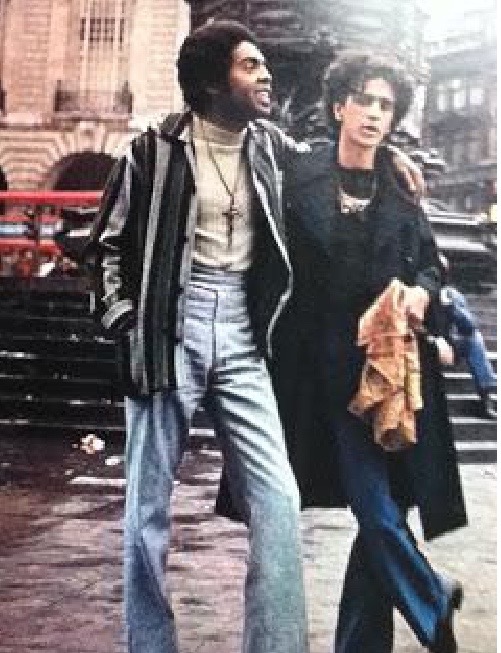
Andy Wood, founder of La Linea music festival, started his career putting on concerts for the Nicaragua Solidarity Campaign and describes a buzzing scene that tapped into the broader politically activity in Britain at the time. “The Nicaragua Campaign had thirty full time staff and brought loads of artists. We had support from the Greater London Council, run by ‘Red Ken’ Livingstone at the time, who helped bring the likes of Rubén Blades, Inti-illimani and Silvio Rodriguez. This was before the dance class boom. People enjoyed dancing to live salsa, without worrying whether they were dancing on the one or the two.”
With political unrest came the influx of political refugees, from the dictatorships. Without knowing it, the UK was hosting what were to become some of Latin America's greatest artists. Some of them, like Caetano wrote one of his most beautiful songs here, 'London,London' which he dedicated to the city, sung by many artists including here by Gal Costa.
Adding to the Argentines, Brazilian, Chileans and Central Americans fleeing dictatorships, in the last seventees, was another major demographic from Colombia, fleeing both the political and economic terrors of a 40-year long civil war. The arrival of Colombians, great lovers of tropical music, was when the party really started. Out of the spotlight, the Colombian community, known to be great salsa lovers, built their own thriving music scene in London.
The Guardian writer Richard Williams remembers the Monday night in 1975 when a grungy punk-rocker pub, acted as stage for the first salsa band to across the Atlantic. A 29-year-old Héctor Lavoe, already a legend in the US and South America, played to a scrawny London pub crowd and, according to Williams “for a couple of hours made its seem like the only place to be.”
And then there were just great musicians, looking to broaden their horizons, such as Jorge Spiteri, the Venezuelan whose fusion of 70s funk and latin landed him a major reciord deal in the UK in 1973 and had instant success, touring Europe with no other than Bob Marley.
“I ended up supporting Bob when he played in in Ibiza, frankly because I shared the same booking agent as Bob Marley," Spiteri told LatinoLife before he died 3 years ago. "Bob used to call me ‘Spanish boy’. He said that he liked us because we were rock stars who played salsa, and he invited us to rehearse with them many times. His keyboardist Tyrone Downie became a good friend of mine.”
His album Spiteri (click on photo below)

1980s: The Impact of Immigrant Culture
A second Colombian wave came with the further economic slump caused by the busting of the drug cartels in the late 1980s. Today, Britain has the world’s third largest Colombian Diaspora, after the US and Spain. In the years to come, the sheer numbers of Latinos in London and their musical nostalgia ensured an audience for some of the salsa greats who came to play in London year after year through the 1980s– Colombia’s Grupo Niche, Gilberto Santa Rosa and El Gran Combo de Puerto Rico, Willie Colón and Venezuela’s legendary Oscar de Leon. to name a few.
With the Latin community still in its infancy, some Latino children of the 80s such as Phil Manzanera found an outlet for their musical craving by infiltrating the English music establishment. Phil Manzanera, who is half Colombian grew up in Cuba and Colombia before coming to the UK, made his name with Roxy Music and a high level music producer for the likes of David Gilmore, before going back to his roots and producing Latin American artists like Fito Paez and Draco Rosa.
However, there is no doubt that under the surface, Colombians in London were kicking off the salsa club phenomenon, which was spilling over into the high street with Latin themed bars springing up all over London offering salsa classes. Paul Young, who jumped on the trend by congregating thousands of salsa fans in weekend Congresses says, “a lot of those people were introduced to Latin music and artists such as Tito Puente, purely through the salsa dance craze.”
The allure of Latin rhythms allowed many British musicians such as pianist Alex Wilson and Robin Jones of Salsa King or DJs Snowboy and Gilles Peterson, to make a living off their passion for Latin music. But the influence hasn’t all been one way. You can hear the appreciation of English pop in much Latin music especially the Brazilians (check out Milton Nascimento's stunning Brazilianisation of The Beatles’ Hello, Goodbye.) and Argentines such as Soda Stereo, Fito Paez, Charly Garcia and Luis Alberto Spinetta.
The 'Latin Boom' of the 1990s
The years of Canción de Protesta and Latino immigrant culture bubbling under London’s surface, coincided with the advent of World Music which was being promoted by mainstream music magazines such as NME. For lack of better knowledge, the magazine latched on to neo-Latin artists such as Bhundu Boys and Kid Creole and the Coconuts, putting them on its cover. UK Chart successes such as 'Annie, I'm Not Your Daddy' provided the Anglo audience with the bridge into Latin Music, says Andy Wood, “by synthesizing Latin and Caribbean music for a wider audience, I would say he did what Edmundo Ros did, but for a different generation.”
This, according to Wood, prepared the ground for the success of Buena Vista Social Club in the nineties. “Sure, the Wim Wenders film made them into an international phenomenon.” says Nick Gold, executive producer of the Buena Vista series, “but also the live performances, great reviews and word of mouth of an already receptive audience.
Meanwhile, Latin rhythms were being introduced into the UK market through the invasion of the commercial US-Latino superstars - Gloria Estevan, Ricky Martin, and Shakira - who provided the Saturday night anthems of London’s now prolific Latin-flavoured venues such as Bar Salsa and Havana and added to what the Evening Standard described as “The Latin Boom.”
These global Latin stars, made in America, would be just the beginning of a new kind of Latin influence. The real Latin Explosion was just about to begin...
The Noughties and A New Bi-Cultural Generation
With the impact of the estimated 1 million strong Latin American community, it was hardly surprising that the 2000s would see the rise of the big Latin music festivals. They began with Salsa 2000 in Battersea Park, which had Celia Cruz, Oscar de Leon, Ruben Blades and Alberto ‘El Canario’ sharing the stage. Then came Colombianamente, La Linea and Colombiage, Clapham Common’s Latin Splash, which drew 9,000 people in 2005 and of course Carnaval del Pueblo in Burgess Park, at that time London’s biggest Latin Festival.
South London was starting to get a distinctly Latin edge, and this was supplemented by the influx of Spaniards and Latin Americans arriving through Spain, adding yet another layer to the original Spanish speaking communities. Suddenly you couldn’t walk a block without hearing Spanish in London. The melting pot that is London started to spawn new fusion bands like Family Atlantica, Lokandes, Grupo Lokito and Wara, which were Latin but created a very distinct London sound by incorporating sounds all other communities from Bangladesh to the Congo.
But the most important movement was happening below the surface. Remember those Colombians kicking up a storm in the salsa clubs of the 1980s? Their kids - first generation of Latino-Brits - began to come of age and make their mark on London, mostly noticeably on the club scene. Their music of choice was the reggaetón coming out of Puerto Rico via the US. London's first reggaeton clubnight ‘La Bomba’ at Ministry of Sound began in 2005, began showcasing the UK's first expressions of urban Latin music by giving a platform to British-Colombian kids to test the music their were making with their Jamaican friends.
“I remember taking my Jamaican, Asian, Arab friends from South London and they were all like…wow this is cool,” says Luciano Pinto, owner of Latinoshaderoom, one of the UK’s most influential social media platforms for Latinos. Suddenly Latin music was seen as cool again.
“Whereas the salsa scene began to alienate people with its obsessive focus on dance technique,” says DJ Jose Luis, founder of La Bomba. ”The reggaeton scene brought it back to the music and culture of the Spanish Caribbean. It recreated that inclusive atmosphere.”
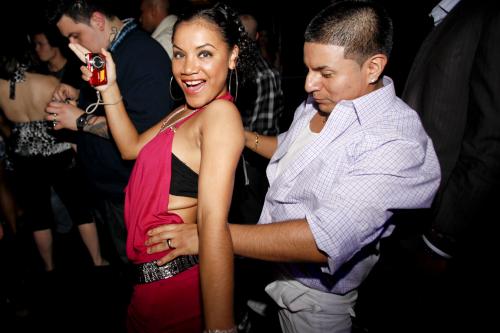 legendary nights at La Bomba
legendary nights at La Bomba
While the UK music industry and media completely ignored it reggaetón was fast becoming the most listening to music on the planet. While the media were talking about Mambo no.5 and Ricky Martin - one hit wonders, detatched from any authentic expressions of Latin Music - the urban beat from the Latin Caribbean being played in the clubs tapped into something much deeper. Daddy Yankee's Gasolina in 2005 and then Despacito in 2018 expressed something authentic and appealing, that resonated not only with Latinos, but lovers of urban music, african music and pop.
What the UK music industry didn't realise was how familiar reggaeton was to ALL music lovers, because pop had been using tropical beats for years: “Ed Sheeran’s ‘Shape of You’, Ariana Grande’s ‘Side to Side’, Clean Bandit’s ‘Rockabye’, Major Lazor’s ‘Lean On’ and Lethal Bizzle’s ‘Fester Skank’ had all employed dancehall and reggeatón beats. While men in offices could not longer pedal unauthentic Latin hits because YouTube was allowing reggaeton to bypass the UK music media.
The Future of London Latin
Fast forward to 2023...the kids partying at La Bomba back in 2005, even they're having kids! And these kids are not just consuming Urban Latin music, but making it, and making it in their own way. A new true British-Latin generation, more confident with its identity, and emboldened by the global popularity of Latin music, are drawing inspiration from their Latinness, whilst incorprating the sounds of London, grime, drill and hiphop
. They are not just copying Puerto Rican or US Latin Urban Artists, says Jose Luis: “we are seeing the development of a UK urban Latin sound that is characterised by its authenticity.”


